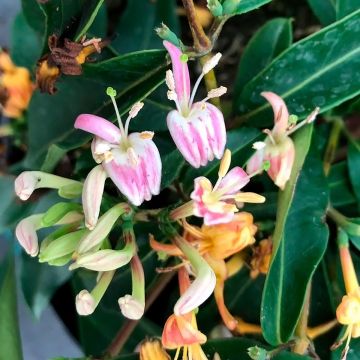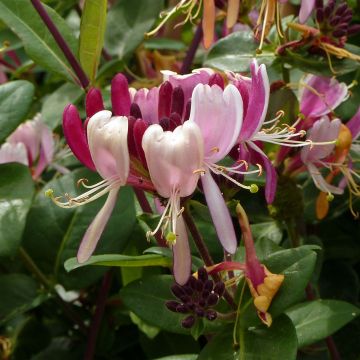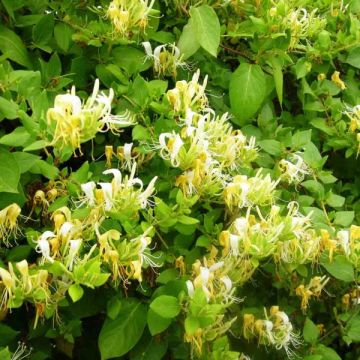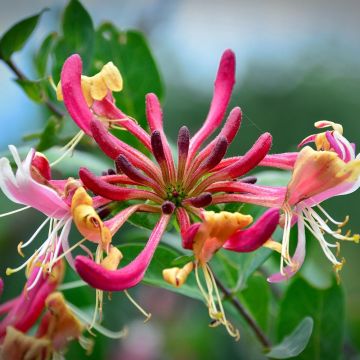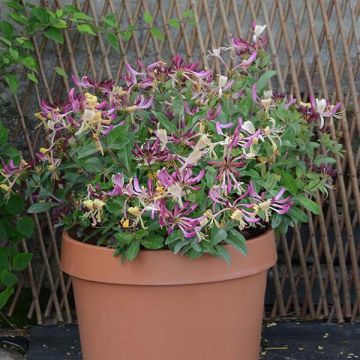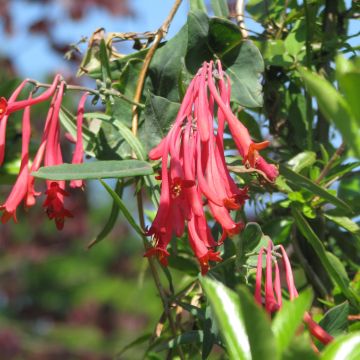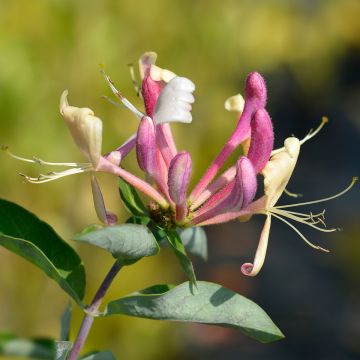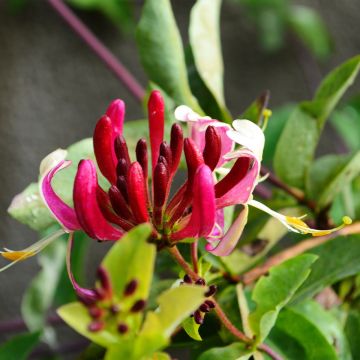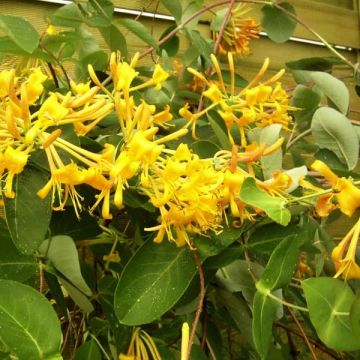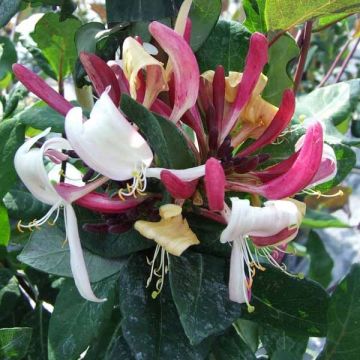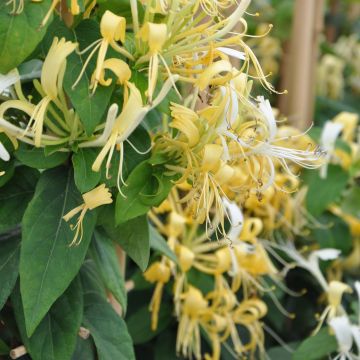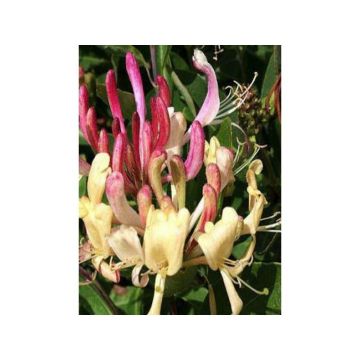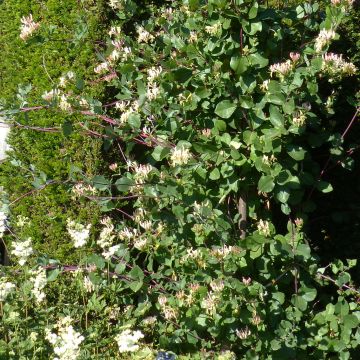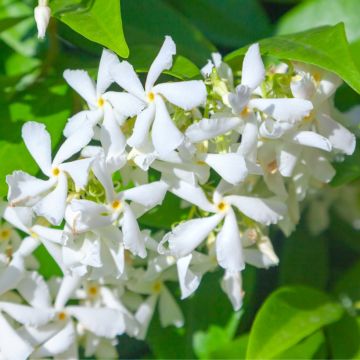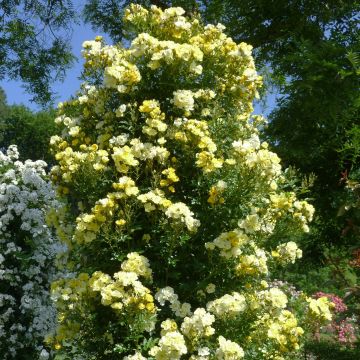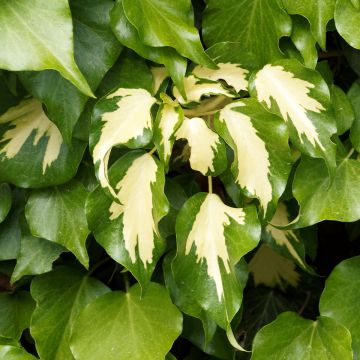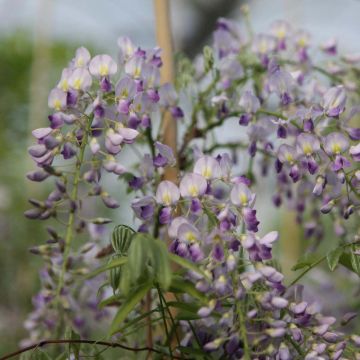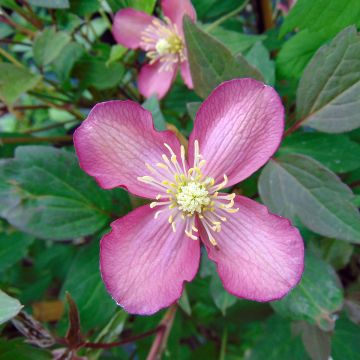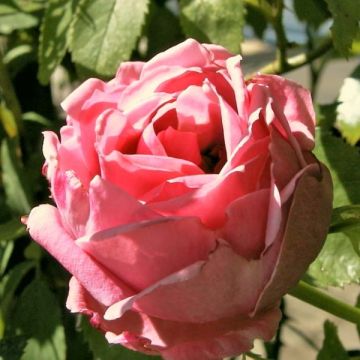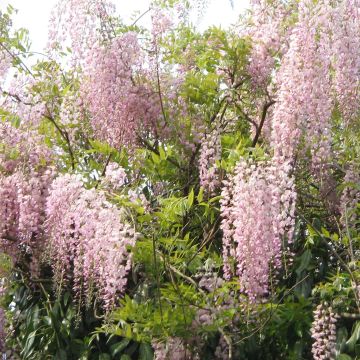

Lonicera Celestial
Lonicera Celestial
Lonicera Celestial
Honeysuckle
The plant I received is a bit worn out, but it's regrowing nicely. For now, it's too young to see any blooming.
Alexandra, 03/06/2020
Special offer!
Receive a €20 voucher for any order over €90 (excluding delivery costs, credit notes, and plastic-free options)!
1- Add your favorite plants to your cart.
2- Once you have reached €90, confirm your order (you can even choose the delivery date!).
3- As soon as your order is shipped, you will receive an email containing your voucher code, valid for 3 months (90 days).
Your voucher is unique and can only be used once, for any order with a minimum value of €20, excluding delivery costs.
Can be combined with other current offers, non-divisible and non-refundable.
Why not try an alternative variety in stock?
View all →This plant carries a 6 months recovery warranty
More information
We guarantee the quality of our plants for a full growing cycle, and will replace at our expense any plant that fails to recover under normal climatic and planting conditions.

Would this plant suit my garden?
Set up your Plantfit profile →
Description
Lonicera 'Celestial' is a small hybrid Honeysuckle, quickly forming a dense and rounded climber with bluish foliage, which is very decorative. Its summer flowering is long lasting and truly delicate: its long, very fine flowers, coloured pink and salmon orange, radiate around a central point. It is easy to integrate into a small garden, can be trained to climb or used as groundcover, and can be easily grown in a large pot on the patio, where it will provide a wonderful fragrance. This variety, with its many qualities, adapts to any ordinary soil, tolerates summer drought, and proves resistant to diseases.
Lonicera 'Celestial' is a hybrid of horticultural origin. All Honeysuckles belong to the Caprifoliaceae family. 'Celestial' is a deciduous to semi-evergreen variety, depending on the severity of the winter, with a climbing habit. The mature plant will reach an average height of 3m (10ft) and a spread of 1.50m (5ft). The particularly generous flowering period from June to September takes place at the tips of the young shoots, throughout the growth period. The very fine tubular flowers, 4cm (2in) long, dark pink in bud, open to reveal two lips of a bright yellow-orange tinged with pink, exhaling a powerful fragrance. They are arranged in almost flat whorls, like the spokes of a wheel, in the axils of the leaves, producing some non-edible red berries. The young voluble branches are green in colour. The foliage is composed of thick, rounded leaves, 5cm (2in) in diameter, which sometimes appear pierced in the centre by the stem. They take on a lovely green-blue colour when mature.
Lonicera Celestial can be trained to climb on a trellis, a fence, or an espalier, especially on a pergola located on a patio, a terrace, or near the house where its fragrant flowering will be greatly appreciated. Alternatively, according to individual preferences, it can be placed on a fence or a stone wall where it will gracefully cascade down. When grown as a bush, it will enhance a border near the house or the foreground of a flowering hedge, the edge of a group of trees... There are plenty of ideas for associations with clematis: for example, it can be paired with small clematis varieties like Clematis patens Shin-Shigyoku, Prince Charles, winter or officinal jasmine, perennial peas (Lathyrus latifolius), a small climbing rose 'Laguna', bright pink or Ghislaine de Féligonde and Alchemist in warm tones.
Report an error about the product description
Lonicera Celestial in pictures
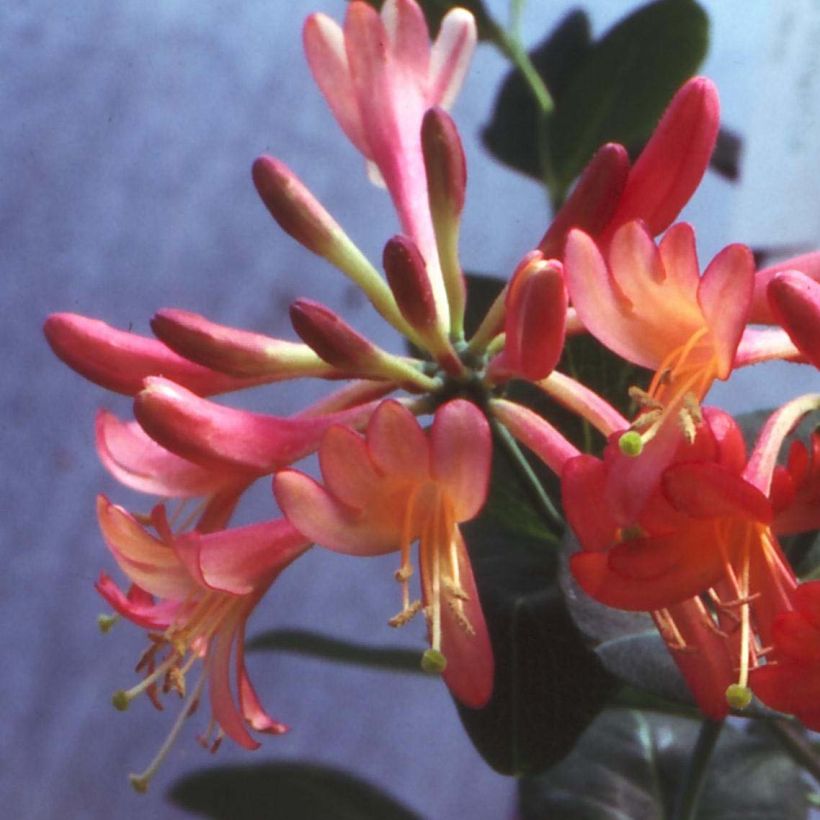

Plant habit
Flowering
Foliage
Botanical data
Lonicera
Celestial
Caprifoliaceae
Honeysuckle
Cultivar or hybrid
Other Honeysuckle
View all →Planting and care
Honeysuckles thrive in any good deep garden soil in a gently sunny exposure. Prune to tidy the plant each year. It is also possible to severely cut back an old plant to completely renew its framework. This restoration can take place over one or two years. Honeysuckles are hardy climbing plants, ideal for quickly dressing a wall or a pergola. Provide them with support, they will cling on their own. We love them for their long flowering and wonderful fragrance. Our advice: Plant it near your patio to fully enjoy its intoxicating scent, which intensifies in the morning and evening. Their enemies are aphids, as well as powdery mildew. To reduce the risk of disease, it is helpful to properly ventilate the honeysuckle and place it in an open location.
Planting period
Intended location
Care
-
, onOrder confirmed
Reply from on Promesse de fleurs
Similar products
Haven't found what you were looking for?
Hardiness is the lowest winter temperature a plant can endure without suffering serious damage or even dying. However, hardiness is affected by location (a sheltered area, such as a patio), protection (winter cover) and soil type (hardiness is improved by well-drained soil).

Photo Sharing Terms & Conditions
In order to encourage gardeners to interact and share their experiences, Promesse de fleurs offers various media enabling content to be uploaded onto its Site - in particular via the ‘Photo sharing’ module.
The User agrees to refrain from:
- Posting any content that is illegal, prejudicial, insulting, racist, inciteful to hatred, revisionist, contrary to public decency, that infringes on privacy or on the privacy rights of third parties, in particular the publicity rights of persons and goods, intellectual property rights, or the right to privacy.
- Submitting content on behalf of a third party;
- Impersonate the identity of a third party and/or publish any personal information about a third party;
In general, the User undertakes to refrain from any unethical behaviour.
All Content (in particular text, comments, files, images, photos, videos, creative works, etc.), which may be subject to property or intellectual property rights, image or other private rights, shall remain the property of the User, subject to the limited rights granted by the terms of the licence granted by Promesse de fleurs as stated below. Users are at liberty to publish or not to publish such Content on the Site, notably via the ‘Photo Sharing’ facility, and accept that this Content shall be made public and freely accessible, notably on the Internet.
Users further acknowledge, undertake to have ,and guarantee that they hold all necessary rights and permissions to publish such material on the Site, in particular with regard to the legislation in force pertaining to any privacy, property, intellectual property, image, or contractual rights, or rights of any other nature. By publishing such Content on the Site, Users acknowledge accepting full liability as publishers of the Content within the meaning of the law, and grant Promesse de fleurs, free of charge, an inclusive, worldwide licence for the said Content for the entire duration of its publication, including all reproduction, representation, up/downloading, displaying, performing, transmission, and storage rights.
Users also grant permission for their name to be linked to the Content and accept that this link may not always be made available.
By engaging in posting material, Users consent to their Content becoming automatically accessible on the Internet, in particular on other sites and/or blogs and/or web pages of the Promesse de fleurs site, including in particular social pages and the Promesse de fleurs catalogue.
Users may secure the removal of entrusted content free of charge by issuing a simple request via our contact form.
The flowering period indicated on our website applies to countries and regions located in USDA zone 8 (France, the United Kingdom, Ireland, the Netherlands, etc.)
It will vary according to where you live:
- In zones 9 to 10 (Italy, Spain, Greece, etc.), flowering will occur about 2 to 4 weeks earlier.
- In zones 6 to 7 (Germany, Poland, Slovenia, and lower mountainous regions), flowering will be delayed by 2 to 3 weeks.
- In zone 5 (Central Europe, Scandinavia), blooming will be delayed by 3 to 5 weeks.
In temperate climates, pruning of spring-flowering shrubs (forsythia, spireas, etc.) should be done just after flowering.
Pruning of summer-flowering shrubs (Indian Lilac, Perovskia, etc.) can be done in winter or spring.
In cold regions as well as with frost-sensitive plants, avoid pruning too early when severe frosts may still occur.
The planting period indicated on our website applies to countries and regions located in USDA zone 8 (France, United Kingdom, Ireland, Netherlands).
It will vary according to where you live:
- In Mediterranean zones (Marseille, Madrid, Milan, etc.), autumn and winter are the best planting periods.
- In continental zones (Strasbourg, Munich, Vienna, etc.), delay planting by 2 to 3 weeks in spring and bring it forward by 2 to 4 weeks in autumn.
- In mountainous regions (the Alps, Pyrenees, Carpathians, etc.), it is best to plant in late spring (May-June) or late summer (August-September).
The harvesting period indicated on our website applies to countries and regions in USDA zone 8 (France, England, Ireland, the Netherlands).
In colder areas (Scandinavia, Poland, Austria...) fruit and vegetable harvests are likely to be delayed by 3-4 weeks.
In warmer areas (Italy, Spain, Greece, etc.), harvesting will probably take place earlier, depending on weather conditions.
The sowing periods indicated on our website apply to countries and regions within USDA Zone 8 (France, UK, Ireland, Netherlands).
In colder areas (Scandinavia, Poland, Austria...), delay any outdoor sowing by 3-4 weeks, or sow under glass.
In warmer climes (Italy, Spain, Greece, etc.), bring outdoor sowing forward by a few weeks.






























